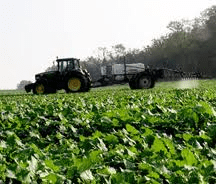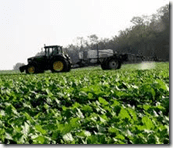The most effective blackgrass control programmes in winter oilseed rape contain either propyzamide or carbetamide in a sequence-based approach, according to the results of an HGCA-funded project on autumn grass weed control.
"In terms of weed control, they are both extremely important chemicals," says Ron Stobart of NIAB TAG, who is conducting the research in conjunction with SAC. "Applied post-emergence, in November time, they give very good results."
Of equally good news for growers, especially those using wheat/rape rotations, is that neither of these herbicides is affected by resistance, he points out. "However, both are under scrutiny for being present in water supplies. So their use is not without challenges."
Rate and timing have been shown to influence their performance, notes Mr Stobart. "Using a reduced rate at a conducive time can be just as effective as a higher rate at a less favourable time. But more work is needed to pin this down further."
One possible solution to the pollution risk is to make use of pre-emergence residual herbicides, to support grass weed control, he suggests.
"There are some older products, such as Avadex, Devrinol and Butisan, which can all be used as part of a programme.
"They give useful, rather than good, control. But they mean that it might be possible to follow them up with a graminicide, rather than having to use either propyzamide or carbetamide every time."
Stuart Hill, technical and development manager at MAUK, believes that there’s scope to reduce the amount of active ingredient being applied by using sequences of carbetamide and propyzamide.
"Using a sequence of carbetamide followed by propyzamide allows you to use less carbetamide, while getting very good blackgrass control" he points out. "The first application is made in mid October, at the 2.5kg rate, followed by the propyzamide at the full rate of 2.1 litres/ha in November."
A maximum gap of four weeks between the two applications is important, he adds. "The carbetamide sensitises the blackgrass, ready for the propyzamide to work well."
Making the first application in drier conditions in October isn’t an issue, believes Mr Hill. "Carbetamide is more mobile in the dry, so it should be used first. Also, applying a lower dose helps to restrict any leaching."
The cost of such an approach is around £65/ha, he calculates. "It’s no more than having to use a graminicide, such as Laser or Aramo alongside one of the baseline herbicides, and it avoids the use of active ingredients with known resistance."
The next stage is to investigate whether the rate of propyzamide can be reduced, while maintaining blackgrass control. "There’s more work to be done. And of course soil conditions make a huge difference to the success of these chemicals."
An alternative approach for growers to consider is to mix carbetamide and propyzamide, he suggests. "This is relevant if you’ve missed the sequence, for any reason. Again, it gives effective blackgrass control."
In this situation, he recommends using 3kg/ha of Crawler and 1.25 litres/ha of Cohort.
"Timing is the key to success. For a mixture, you need to use the traditional timing of soil temperatures at 8C and declining, which is usually mid November."
Cultivations
Getting optimum performance from Kerb in oilseed rape depends on the use of shallow cultivations to a depth of 5cm, says Stuart Jackson of Dow AgroSciences.
Trials conducted by the company over the last two years have confirmed the importance of cultivations in getting the high levels of blackgrass control required and reducing the seed burden for following crops.
"Control becomes much more variable where ploughing is used," he reports. "Our trials showed just 40-50% control in a ploughing regime, compared with 90-99% with shallow tillage. In both situations, the higher level of control came from using the 2.1 litres/ha rate."
This is because Kerb sits in the top couple of inches of soil, he explains. "So any blackgrass coming up from depth, as it can do after ploughing, comes through the Kerb unscathed. The rooting depth of the blackgrass has a bearing."
However, ploughing does initially reduce the blackgrass population, he acknowledges. "You start with lower blackgrass numbers, but you end up with more, due to control differences."
Seeing a carpet of blackgrass emerge following shallow cultivations can be unnerving, he admits. "But using Kerb correctly in this situation allows the oilseed rape to be a cleaning crop."
Mr Jackson’s advice for the coming season is to use shallow cultivations, time the application correctly and use the higher rate.
"The idea with shallow cultivations to a depth of two inches is to just create enough tilth for the seed," he advises.
"You then need to wait until soils are moist and there’s been a fall in temperatures, which is usually mid November. Finally, you need to apply it at the 2.1 litres/ha rate."
http://www.fwi.co.uk/Articles/2011/07/31/128125/Project-reveals-effective-grass-weed-control.htm


Deprecated: strpos(): Passing null to parameter #1 ($haystack) of type string is deprecated in /home/agriviek8Qv/agriviet.net/public_html/wp-includes/comment-template.php on line 2522